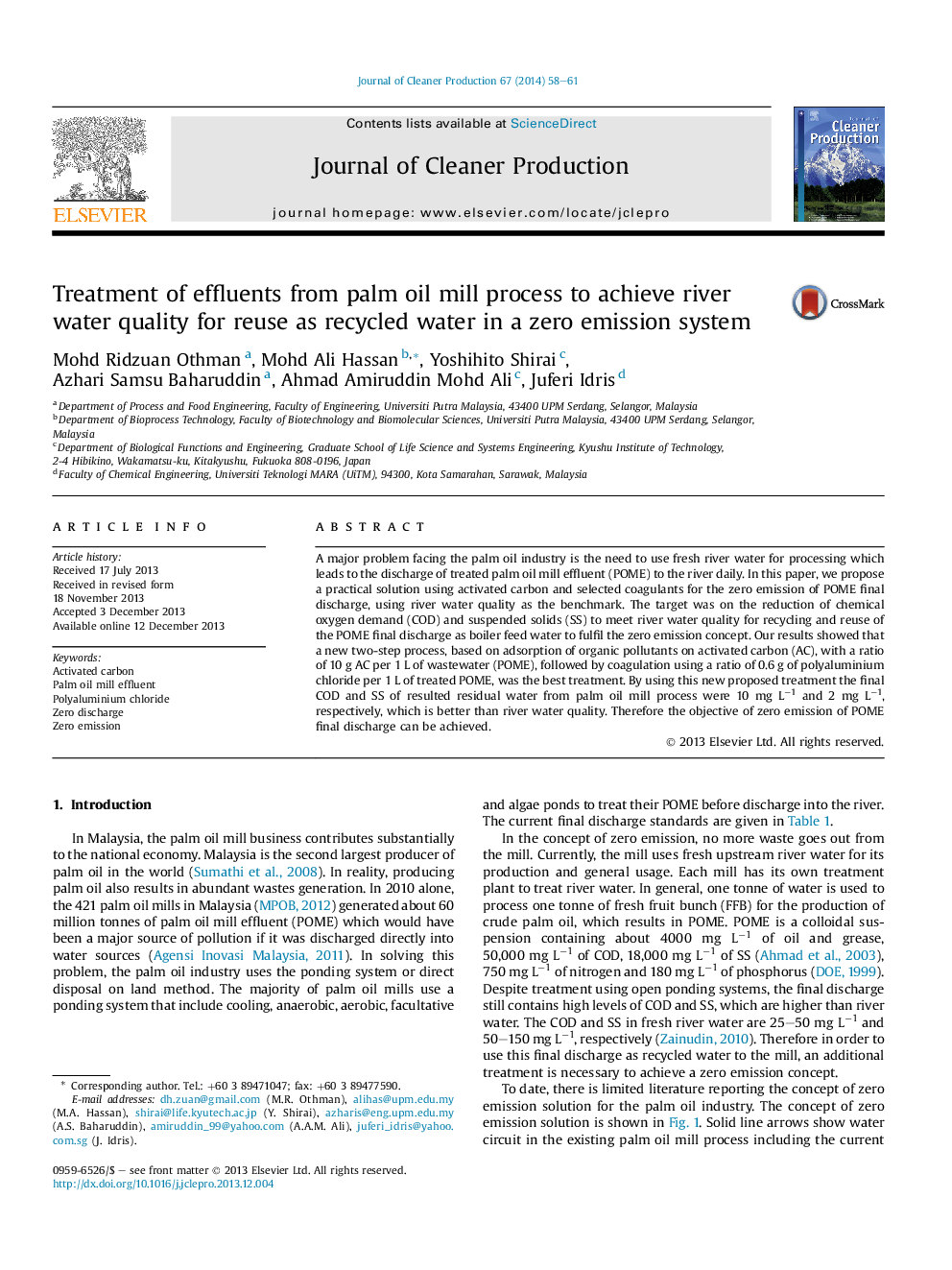| Article ID | Journal | Published Year | Pages | File Type |
|---|---|---|---|---|
| 1744940 | Journal of Cleaner Production | 2014 | 4 Pages |
•A treatment system for zero emission of palm oil mill effluent was proposed.•The final treated wastewater was similar to the quality of river water.•The final treated wastewater can be recycled instead of being discharged.
A major problem facing the palm oil industry is the need to use fresh river water for processing which leads to the discharge of treated palm oil mill effluent (POME) to the river daily. In this paper, we propose a practical solution using activated carbon and selected coagulants for the zero emission of POME final discharge, using river water quality as the benchmark. The target was on the reduction of chemical oxygen demand (COD) and suspended solids (SS) to meet river water quality for recycling and reuse of the POME final discharge as boiler feed water to fulfil the zero emission concept. Our results showed that a new two-step process, based on adsorption of organic pollutants on activated carbon (AC), with a ratio of 10 g AC per 1 L of wastewater (POME), followed by coagulation using a ratio of 0.6 g of polyaluminium chloride per 1 L of treated POME, was the best treatment. By using this new proposed treatment the final COD and SS of resulted residual water from palm oil mill process were 10 mg L−1 and 2 mg L−1, respectively, which is better than river water quality. Therefore the objective of zero emission of POME final discharge can be achieved.
